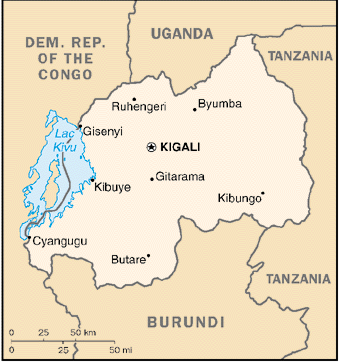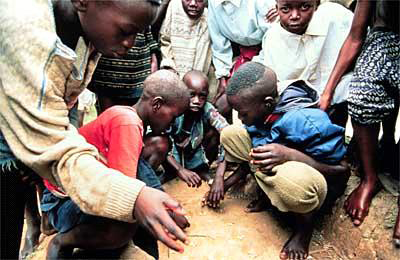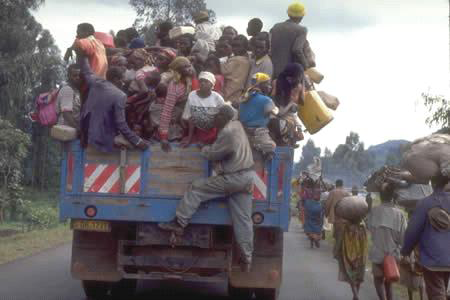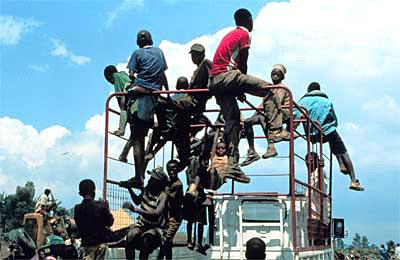Rwanda is one of the smallest countries in Central Africa, with just 7 million people, and is comprised of two main ethnic groups, the Hutu and the Tutsi. Although the Hutus account for 90 percent of the population, in the past, the Tutsi minority was considered the aristocracy of Rwanda and dominated Hutu peasants for decades, especially while Rwanda was under Belgian colonial rule.
Rwanda has been called "a tropical Switzerland in the heart of Africa." It's about a third the size of Belgium, who administered it from 1919 under a League of Nations mandate until its independence in 1962. Most of the Rwandan population was the Hutu ethnic group, who were traditionally crop-growers. For many centuries Rwanda attracted Tutsis who were traditionally herdsmen from northern Africa. For 600 years the two groups shared farming between them, as well as their language, their culture, and their nationality. There have also been many intermarriages between the Hutu and the Tutsis.
Because of the nature of their historical roles, Tutsis tended to be landowners and Hutus were the people who worked the land. This division of labor created a population inbalance in which Hutus outnumbered the Tutsis. Then, a wedge was driven between them when the European colonists moved in. Colonial administrators selected a group to be privileged and educated 'intermediaries' between governor and governed. The Belgians chose the Tutsis who were landowners, tall, and more aristocratic in appearance. This unsettled the stability of Rwandan society. The Tutsis started to treat the Hutu as if they were peasants. European powers also introduced modern weapons and methods of waging war. In 1956 the Hutus rebelled. It would cost over 100,000 lives. By 1959 they seized power and stripped the Tutsi communities of their land. Many Tutsis fled to neighboring countries. In 1990 the Tutsis rebelled and attacked back. This was the beginning of a civil war.
Hutu leaders and extremists fiercely opposed any Tutsi involvement in government. On April 6, 1994 the plane carrying Rwanda's president was shot down, the Tutsis were accused of killing the president, and Hutu civilians were told that it was their duty to wipe the Tutsis out. With this, genocide began.




